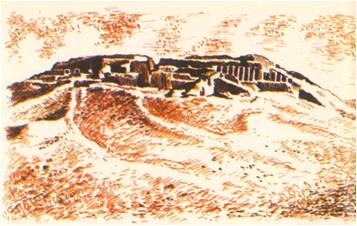BEFORE ELI Whitney invented the cotton gin, Southern plantation owners were beginning to wonder if they should not give up their slaves. There was a good market for cotton; the English were buying all the cotton they could get to make into cloth in their new factories. It took too long to separate raw cotton from the seed and raising cotton simply did not pay. If the plantation owners stopped raising cotton, they would really have no need for slaves. Then after the invention of the cotton gin, raising cotton began to pay — and pay well! Cotton became the South’s big cash crop and the more cotton the plantation owners raised, the more slaves they needed. So, slavery grew in the South while it was dying out in other parts of the world. Slavery had been outlawed in the British colonies in 1833, in the French colonies fifteen years later; by this time, too, most of the Latin-American republics had liberated their slaves. The economy of the South was based on slave labour and the vast estates of the plantation owners, with their mansions, slave quarters and outbuildings, resembled the manors of feudal Europe. As a matter of fact, there was much in Southern society that resembled feudalism. The plantation owners formed a kind of aristocracy and lived the lives of country gentlemen; they owned most of the slaves and most of the land. The poorer Southerners also lived by farming, but their land holdings were small and they worked in the fields beside the one or two slaves they could afford. The South had little industry. In the North, on the other hand, while thousands of people still lived by farming, industry was growing day by day. The North needed free labour rather than slaves and Northerners began …
Read More »The Factory System 1750-1800
THE ENGLISH regarded themselves as a free people — but they did not seem to believe in freedom for others. Many of them were engaged in the African slave trade. They shipped manufactured goods from England to America, carried slaves across the Atlantic to the West Indies and brought cargoes of sugar and cotton back to England. It was against the law to ship slaves home to England, yet there seemed to be no law to prevent ordinary Englishmen from being treated as slaves by their own countrymen. The government did nothing to protect them from being kidnapped and forced into years of unwilling service aboard ships or on West Indian plantations. Since the public accepted such practices without much protest, it is hardly surprising that another kind of slavery was allowed to develop in England during the early period of the Industrial Revolution. At that time the large factories were run by water power, which meant they had to be located near swift-running streams in the country, often miles from any population centre from which workers could be hired. Factory owners did not have to depend upon adult workers to run their factories. Most of them used children. Hundreds of boys and girls from overcrowded poorhouses and church orphanages were turned over to factory owners. Children as young as four or five were put to work picking up bits of cotton from the floor. Older ones watched machines and tied thread together whenever there was a break. Their working day started at five or six in the morning. They had an hour or less for dinner and continued working until seven or eight in the evening. A West Indian slave master who visited one of these factories was shocked by the long hours. “I have always thought myself disgraced …
Read More »Civilization comes to India 3500 B.C to 200 B.C.
For thousands of years during the Stone Age, only scattered groups of people had lived in India. With only the simplest tools of bone, wood and stone, they hunted and gathered food. Cut off from other peoples by the mountain and the sea, the first Indians made few advances in their primitive way of life. Then, sometime between 3500 B. C., new settlers began to appear along the Indus River Valley in northwestern India, a region that would be called West Pakistan thousands of years later. It seems almost certain that these newcomers were from the mountains and plateaus to the northwest, the modern lands of Iran and Afghanistan. When they arrived, the new commers were already able to make pottery, to farm and to raise animals. Most likely too, some of them knew of the cities far to the west, on the plains of Mesopotamia. From those more advanced cities, the Indus valley people learned about new objects, such as copper and bronze tools. They also heard tales about how those distant peoples controlled the river’s water, or how they scratched signs in clay tablets to record words. However much they may have borrowed, the Indus Valley people worked out their own ways. By 2500 B. C., a distinctive civilization had begun to develop along the Indus River. The river itself played an important part in this civilization. Sometimes it flooded so badly that it wiped out villages and fieldworks, or even changed its course entirely. Usually however, it overflowed just enough to leave a rich soil for each season’s crops and the people worked together to take advantage of it. The river also made it easy for the various settlements to exchange goods and ideas. The People of the Indus Of the dozens of villages, two soon grew …
Read More »


